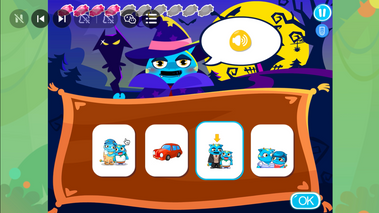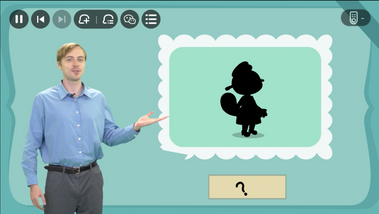Yi Lu

ESL Vocabulary Lesson for Kids
Helping ESL beginners memorize new words in a meaningful context
Duration
Team
My Role
Feb - May 2022
Alo7 Team iat Shanghai Office
Instructional Designer

The Problem
I aim to solve the problems that many ESL learners face when learning vocabulary:
-
Learning without context so that learners can’t connect the content to prior knowledge.
-
The content is unappealing so that learners quickly lose interest.
-
Learners are not motivated.
-
The teacher can’t reach every student in the class to check their learning progress.
The Solution
-
Illustrate the target words by creating the context within a story to help learners build meaningful learning and achieve a depth of processing.
-
Implement a speech recognition and scoring engine to give timely feedback to every student and engage learners' attention.
-
Create vocabulary games and fun activities to inspire their curiosity as intrinsic motivation and give rewards as extrinsic motivation.
-
Follow multimedia principles to help learners reduce extraneous cognitive processes, foster generative processes, and manage essential cognitive processes.
My Role
I wrote the story, drafted the scripts, did the instructional design, storyboarded, communicated with the team to ensure everyone was on the same page, and assisted the filming and post-production.
Design Rationale
Meaningful Learning
The story happens at Mid-autumn Festival that the teacher, Tavi visits his student Ola's family, and meets Ola's parrot, uncle, aunt, and cousin. They manage to figure out together how to equally share mooncakes so that everyone can have one. Finally, they all eat mooncakes and merrily enjoy the moon. I create this story to engage learners in a context that is relevant to their life experiences to build meaningful connections between learning content and prior knowledge. To illustrate the target words loud, pretty, handsome, and clever, I develop different character traits and dialogues.
Multimedia Principles
I followed multimedia principles to help learners reduce extraneous cognitive processes, foster generative processes, and manage essential cognitive processes. For example:
-
Coherence Principle: While making the content interesting, I also try to make details essential to the instructional goal.
-
Signaling Principle: Cues are provided through graphics, and underscores.
-
Redundancy Principle: Words are presented as text when it is a new word. No concurrent narration and redundant text.
-
Temporal Contiguity Principle: Feedback appears on the same screen as the questions and responses.
-
Segment Principle: The content is divided into several chunks.
-
Personalization Principle: The content is presented in conversational language.
-
Voice Principle: Agent dialogue is presented via audio narration.
Engagement and Motivation
I use speech recognition system and vocabulary games to attract learners’ attention and keep them motivated. Every student is equipped with a clicker with the speech recognition and scoring engine embedded in it, which will assess learners’ pronunciation and give ratings. To pursue the higher ranking, kids will be more engaged.
I also use games to help students practice and rehearse family-related words. The more correct answers one has, the more “rewards” he can get. Overall, I hope an interesting story and cartoon characters can trigger learners’ curiosity and interests as their intrinsic motivation, and also higher rankings and game rewards can be the extrinsic motivation.
Skill Set
-
Microsoft Powerpoint
-
Adobe Premiere
-
Communication
-
Creative Thinking
-
Team Work
-
Instructional Design
-
Writing
-
Storyboarding
-
Coordination





